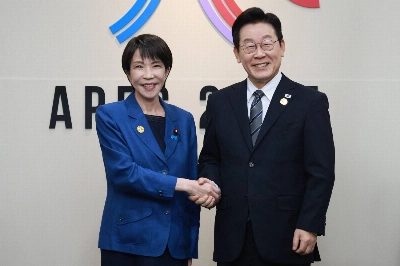The four writing systems utilized in Japanese (>kanji, katakana, hiragana and the Roman alphabet, known as romaji ) provide Japanese advertising copywriters, journalists and young people with an abundance of raw material from which to create new words. The great majority of these neologisms fade away after having served an ephemeral usefulness, but a select few earn a permanent place in the Japanese vernacular through inclusion in the authoritative Japanese dictionary Kojien (蠎・セ櫁拒, Iwanami Shoten Publishing).
The latest update of Kojien, the first in a decade, was published in January 2008. New entries were limited to a mere 10,000, winnowed down from an initial candidate pool of 100,000. Even relatively established favorites 關後∴(moe, infatuation) and 縺ァ縺阪■繧・▲縺溽オ仙ゥ・(dekichatta kekkon, pregnant-marriage, "shotgun wedding") didn't make the cut.
Predictably, 40 percent of the new inductees are English loanwords that are written in katakana script.

















With your current subscription plan you can comment on stories. However, before writing your first comment, please create a display name in the Profile section of your subscriber account page.